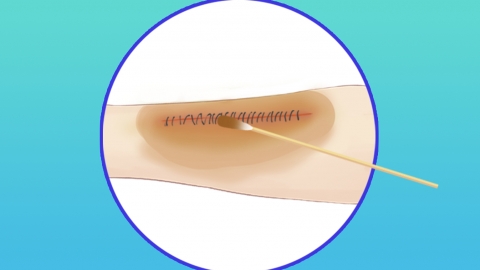How to disinfect a wound with alcohol
The general procedure for disinfecting a wound with alcohol typically includes cleaning the skin around the wound, selecting the appropriate alcohol concentration, controlling the disinfection area and sequence, avoiding repeated wiping, and observing the reaction after disinfection. A detailed explanation is as follows:

1. Clean the skin surrounding the wound: Before disinfection, rinse the area around the wound with saline solution or running water to remove surface dirt, dust, and debris. This prevents contaminants from being pushed into the wound by the alcohol, which could increase irritation or lead to infection. After rinsing, gently pat the area dry with sterile gauze.
2. Select the appropriate alcohol concentration: Use medical-grade alcohol with a concentration of 70%–75%, which offers optimal germ-killing effectiveness with relatively low irritation. Avoid using 95% high-concentration alcohol, as it can rapidly coagulate bacterial surface proteins, forming a protective layer that reduces disinfection efficacy and increases irritation to the wound.
3. Control the disinfection area and sequence: Dip a sterile cotton swab in alcohol and wipe in an outward spiral motion starting from the center of the wound. The disinfected area should extend at least 5 cm beyond the wound edges. Wiping from the outside inward may introduce external bacteria into the wound. Each cotton swab should be used only once and not re-dipped into the alcohol.
4. Avoid repeated wiping: Wipe each area only 1–2 times; avoid excessive friction. Over-wiping can damage newly formed epithelial cells on the wound surface, delay healing, and intensify discomfort, as alcohol is irritating to mucosal tissues and repeated contact may cause significant pain or irritation.
5. Observe the reaction after disinfection: After disinfection, monitor the wound for signs of increased redness, persistent stinging, or increased discharge. If such reactions occur, they may indicate alcohol irritation or an existing infection. In such cases, discontinue alcohol use immediately and switch to a gentler disinfection method.
After alcohol disinfection, if the wound is large or prone to friction, cover it with sterile gauze for protection. If discomfort persists or signs of infection appear, seek medical attention promptly.







